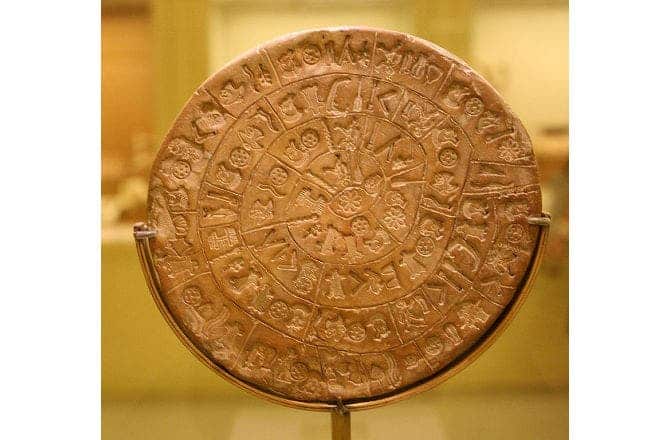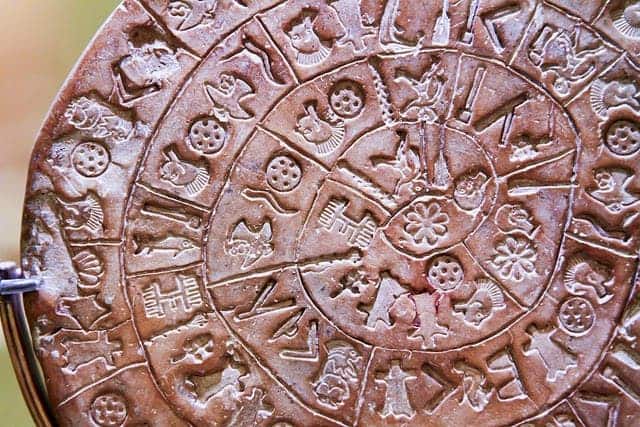A disk made from clay dating from 4,000 years ago was finally decoded. The Phaistos Disk has puzzled specialists for over a century, but archaeologists have finally managed to crack the code.

The Phaistos Disk is a disk of fired clay from the Minoan palace of Phaistos on the Greek island of Crete, probably dating to the middle or late Minoan Bronze Age (2nd millennium BC). It is about 15 cm (5.9 in) in diameter and covered on both sides with a spiral of stamped symbols. Its purpose and meaning — and even its geographical place of origin — used to be an enigma, and the Phaistos Disk was widely regarded as one of the most famous mysteries of archaeology.
It was found in 1908, and it took over a century for archaeologists to come up with at least a satisfying deciphering. Dr. Gareth Owens, of the Technological Educational Institute of Crete, says he has figured out some of its keywords and the general message it conveys.
The disk is covered with a total of 241 “picture” segments created from 45 individual symbols. Owens argues that the message on the disk is actually a prayer to “mother” — the Minoan Mother Goddess of Fertility.
“The most stable word and value is ‘mother,’ and in particular the mother goddess of the Minoan era,” Owens said.
He says that using what he has already found, 90 percent of the disk can now be deciphered; one complex and crucial complex of signs found in three parts of one side of the disk spelling I-QE-KU-RJA, with I-QE meaning “great lady of importance”. Another crucial word is AKKA, which means “pregnant mother” according to the researcher.

Minoan Religion was a religion of the Bronze Age Minoan civilization. There are still many questions regarding this religion and its significance, but we do know that they followed some type of polytheistic cult, primarily worshiping female goddesses, something referred to as “matriarchal religion”.
The discovery is extremely significant because it shows that the disk had a message in itself, and was not the prehistoric equivalent of a typewriter, as was suggested by some. The German typesetter and linguist Herbert Brekle, in his article “The typographic principle” in the Gutenberg-Jahrbuch, argues that the Phaistos Disc is an early document of movable type printing, since it meets the essential criteria of typographic printing, that of type identity:
“An early clear incidence for the realization of the typographic principle is the notorious Phaistos Disc (ca. 1800–1600 BC). If the disc is, as assumed, a textual representation, we are really dealing with a “printed” text, which fulfills all definitional criteria of the typographic principle. The spiral sequencing of the graphematical units, the fact that they are impressed in a clay disc (blind printing!) and not imprinted are merely possible technological variants of textual representation. The decisive factor is that the material “types” are proven to be repeatedly instantiated on the clay disc.”
If Owens is right, then this theory is wrong, and the disk is nothing more than a highly complex prayer, written on clay. Having worked on the deciphering for over 6 years, Owens jokingly calls the Phaistos Disk the first Minoan “CD-ROM” for its shape and hard-coded data.






